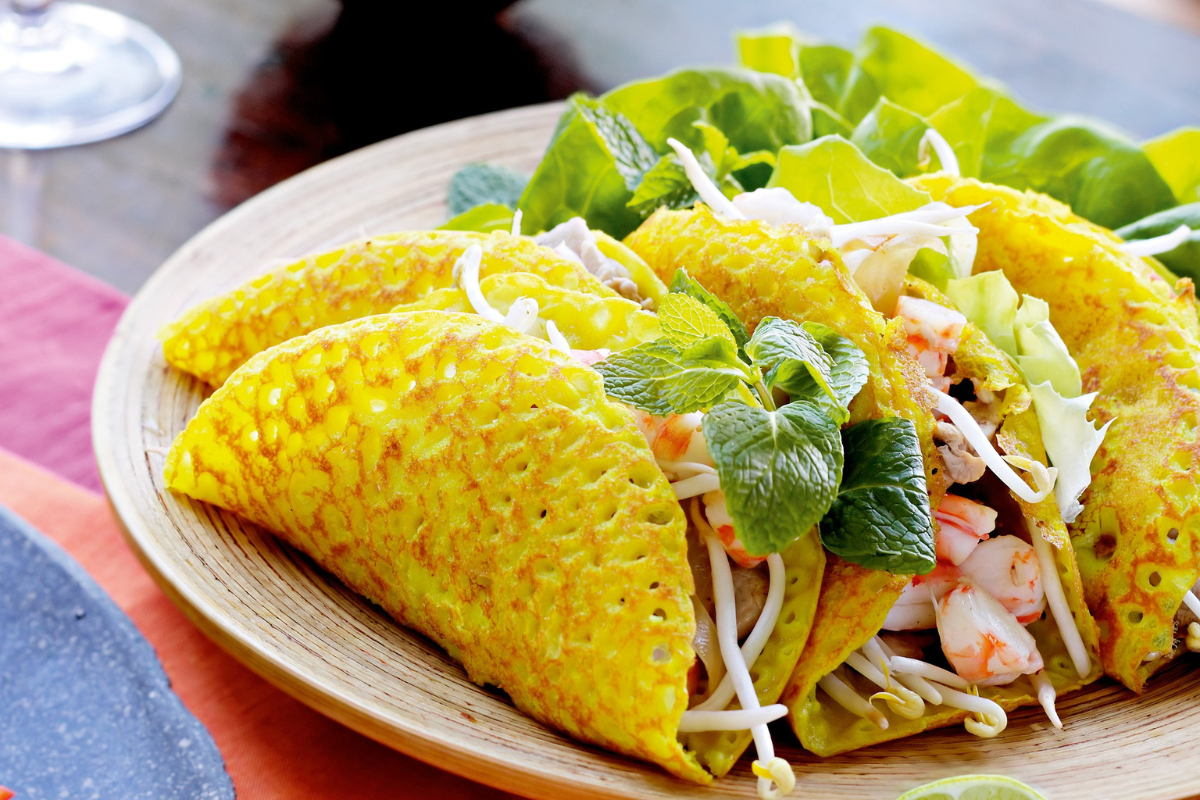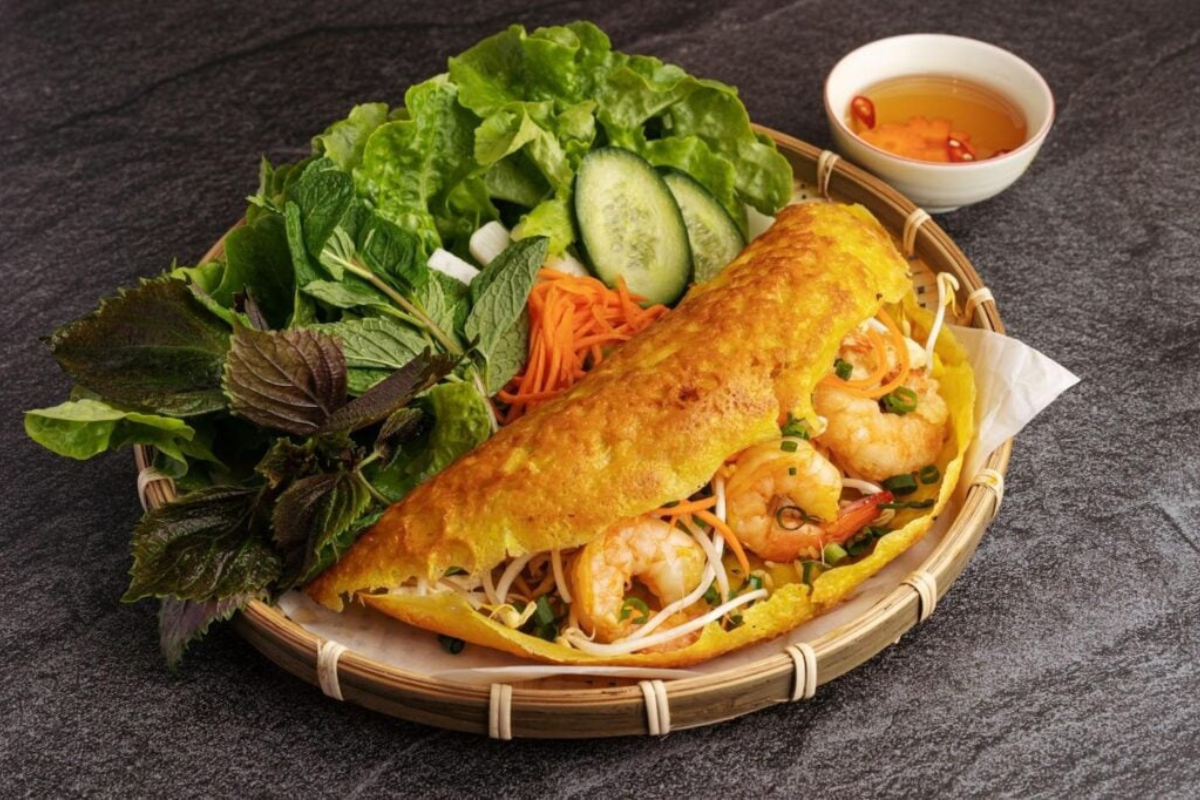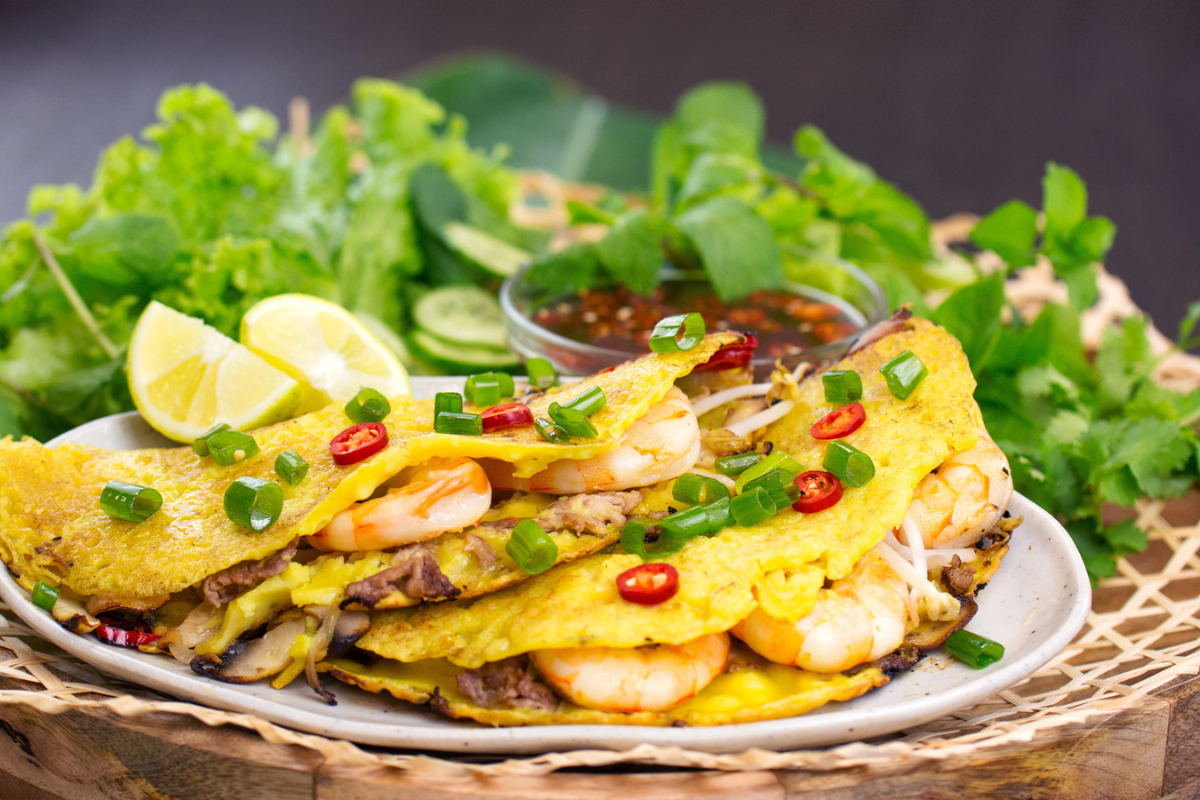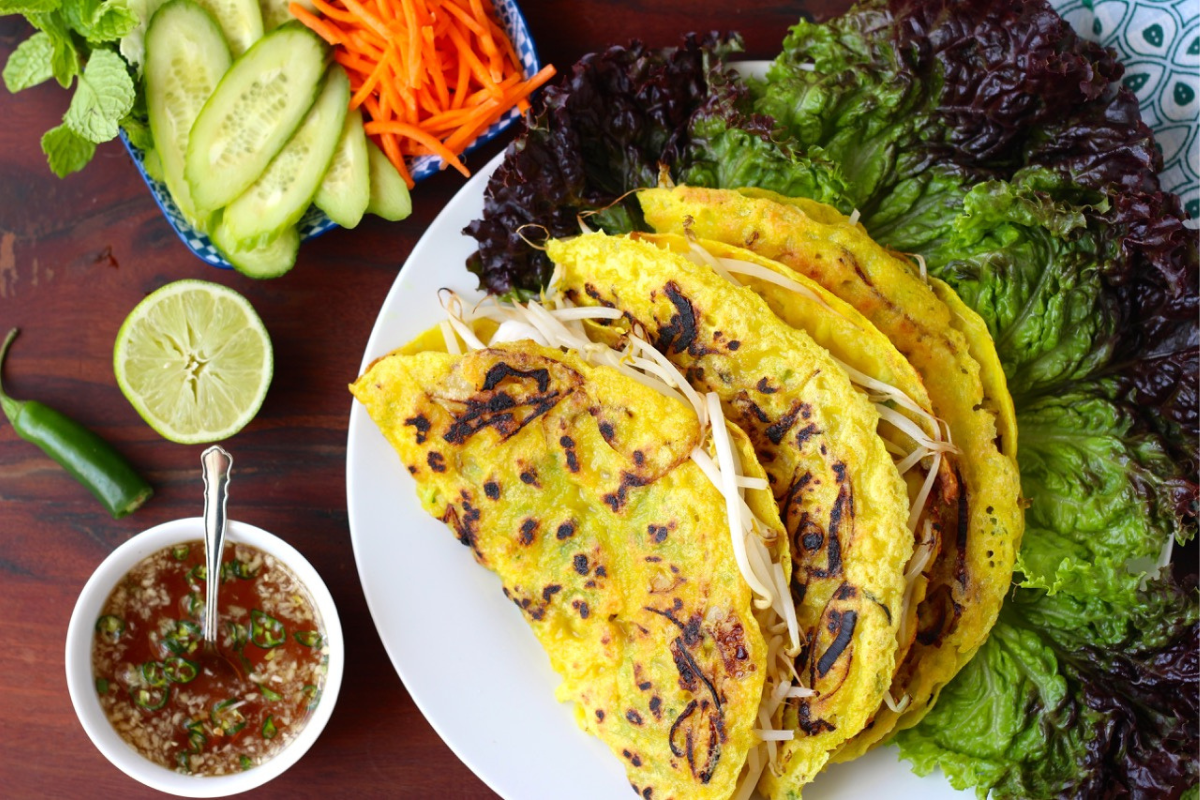Banh Xeo, the Vietnamese sizzling pancake, is more than just a culinary creation. It is a cultural tapestry woven with history, tradition, and vibrant flavors. From the satisfying sizzle it makes upon touching the hot pan to the symphony of textures and tastes within each bite, it’s an experience that lingers long after the last morsel is savored.

Photo: Emil Moe
The sizzling sound that fills the air, the vibrant yellow hue that catches the eye, the symphony of textures and flavors that dances on the palate – Banh Xeo, the Vietnamese sizzling pancake, is more than just a dish but an experience. This culinary masterpiece, born in the heart of Southern Vietnam, has captivated hearts and stomachs for generations, offering a glimpse into the region’s rich heritage and vibrant spirit.
A journey through time: The origins of Banh Xeo
The history of Banh Xeo remains shrouded in a delicious mist. While its exact origin is disputed, most agree it likely emerged in south-central Vietnam around the 17th century. Some believe it originated from ethnic Cham communities, adapting elements of Indian pancakes like dosa. Others link it to interactions with European colonizers, who introduced wheat flour crepes. Regardless of its birthplace, Banh Xeo quickly became a staple, especially in the fertile Mekong Delta, where rice flour was abundant and seafood readily available.
Like a melody with regional variations, Banh Xeo presents itself differently across Vietnam. In the south, it’s a large, vibrant yellow pancake, its color courtesy of turmeric. The coconut milk-enriched batter yields a crispy exterior and a soft, slightly chewy interior, housing a generous filling of pork belly, shrimp, bean sprouts, and sometimes mung beans. Fresh herbs like perilla leaves, mint, and basil add a burst of aroma and flavor.

Photo: The Kitchen Community
Central Vietnam offers a smaller, thinner version, often accompanied by a variety of dipping sauces like fish sauce with lime and sugar, or fermented anchovy sauce. Shredded pork, shrimp, and vegetables are wrapped in rice paper with the pancake, creating individual bites bursting with texture and taste.
Even within regions, variations exist. Some families add turmeric powder to the central version, while others in the south prefer a slightly thicker batter. Local ingredients like squid, crab, and even jackfruit can find their way into the fillings, adding a touch of individuality to each experience.
Beyond the sizzle: The art of making Banh Xeo
Creating Banh Xeo is an art form, requiring both skill and a touch of magic. The batter, a delicate balance of rice flour, water, turmeric, and coconut milk, needs to be thin enough to spread into a crisp pancake but thick enough to hold the filling. The heat control is crucial, ensuring the pancake sizzles without burning. The filling, a symphony of textures and flavors, is meticulously prepared and cooked to perfection.

Photo: Asian Inspirations
The true magic lies in the assembly. A ladle of batter sizzles in the pan, and quickly spreads into a thin circle. The filling, a dance of colors and textures, is artfully placed in the center. With a practiced flick of the wrist, the pancake is folded, creating a golden crescent moon ready to be devoured.
Banh Xeo transcends mere sustenance but a social experience. It’s enjoyed at street stalls, bustling restaurants, and family gatherings, often served alongside other Vietnamese favorites like goi cuon, a kind of fresh spring roll, and Bun Bo Hue, known as spicy beef noodle soup. The act of sharing, assembling each bite with fresh herbs and dipping sauce, fosters connection and creates lasting memories.
Beyond the sizzle: Exploring regional variations of Banh Xeo
While the sizzling symphony of Banh Xeo resonates throughout Vietnam, its melody takes on distinct variations as you journey across the country. From the golden giants of the South to the delicate morsels of the Central region, each region adds its unique notes to this culinary masterpiece.
The Southern symphony: In the Mekong Delta, where Banh Xeo is said to have originated, the dish embodies the region’s abundance. Here, the pancakes are large and golden, boasting a generous amount of filling. Shrimp, pork belly, and bean sprouts remain the classics, but regional variations introduce unique twists. In Ho Chi Minh City, you might encounter “Banh Xeo Nhum” filled with sea urchin, while in Can Tho, “Banh Xeo Ga” features fragrant chicken. The dipping sauce also adopts a sweeter and spicier profile, reflecting the region’s vibrant palate.

Photo: Borrowed Salt
Central delicacy: Traveling north, the tempo of Banh Xeo changes. In Central Vietnam, the pancakes shrink in size, becoming delicate and crispy morsels known as “Banh Khoai.” The batter itself sheds its turmeric hue, resulting in a pale yellow color. The fillings become more focused, often featuring pork belly, shrimp, and thinly sliced green banana, showcasing the region’s love for fresh and contrasting textures. The dipping sauce takes a milder turn, highlighting the inherent flavors of the ingredients.
Hue’s unique harmony: Hue, the former imperial capital, adds its elegant touch to Banh Xeo. Here, the dish is known as “Banh Beo,” featuring miniature pancakes arranged on a communal platter. The fillings become even more intricate, incorporating ingredients like shredded pork, quail eggs, and even tiny shrimp patties. The dipping sauce boasts a unique element with a fermented shrimp paste, adding a pungent and complex flavor profile.
These regional variations are just a glimpse into the diverse world of Banh Xeo. Each region, with its unique ingredients, traditions, and cultural influences, adds its verse to this culinary masterpiece. From the bold and vibrant south to the delicate and nuanced center, Banh Xeo serves as a delicious testament to the rich tapestry of Vietnamese cuisine.
Banh Xeo is a cultural ambassador, carrying the flavors and traditions of Vietnam within its crispy folds. From its historical roots to its regional variations, it’s a testament to the country’s culinary diversity and adaptability. So, the next time you encounter this sizzling symphony, take a moment to appreciate its history, its artistry, and the joy it brings to every bite.

